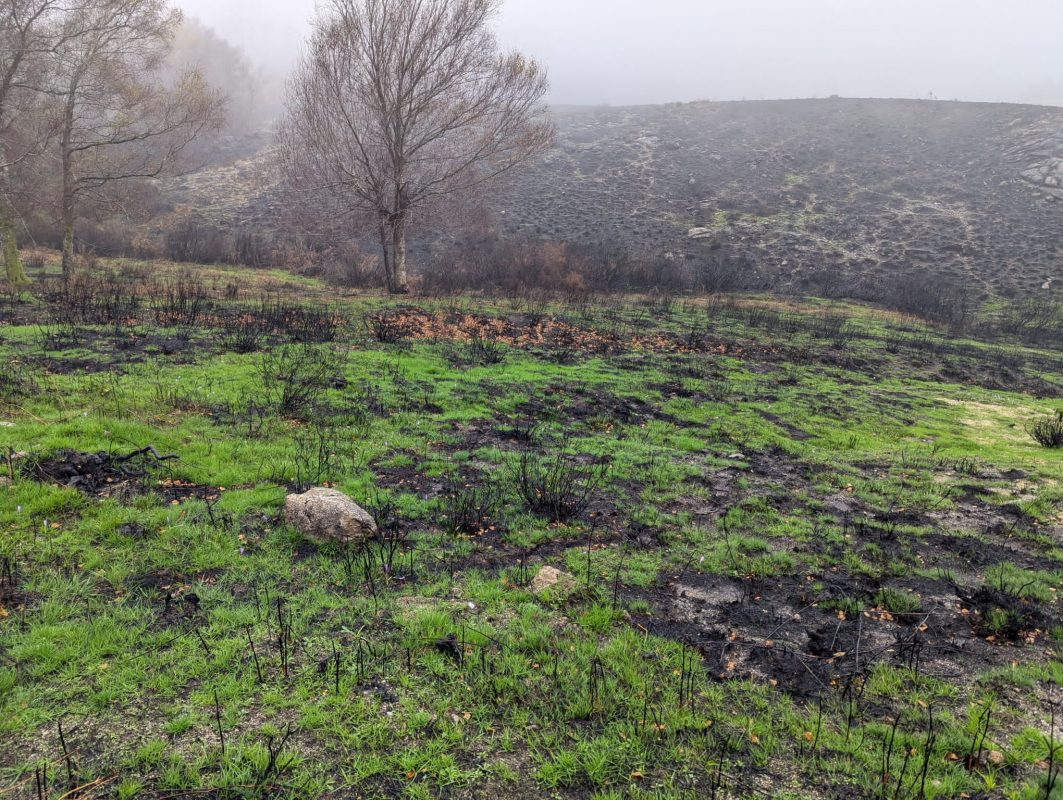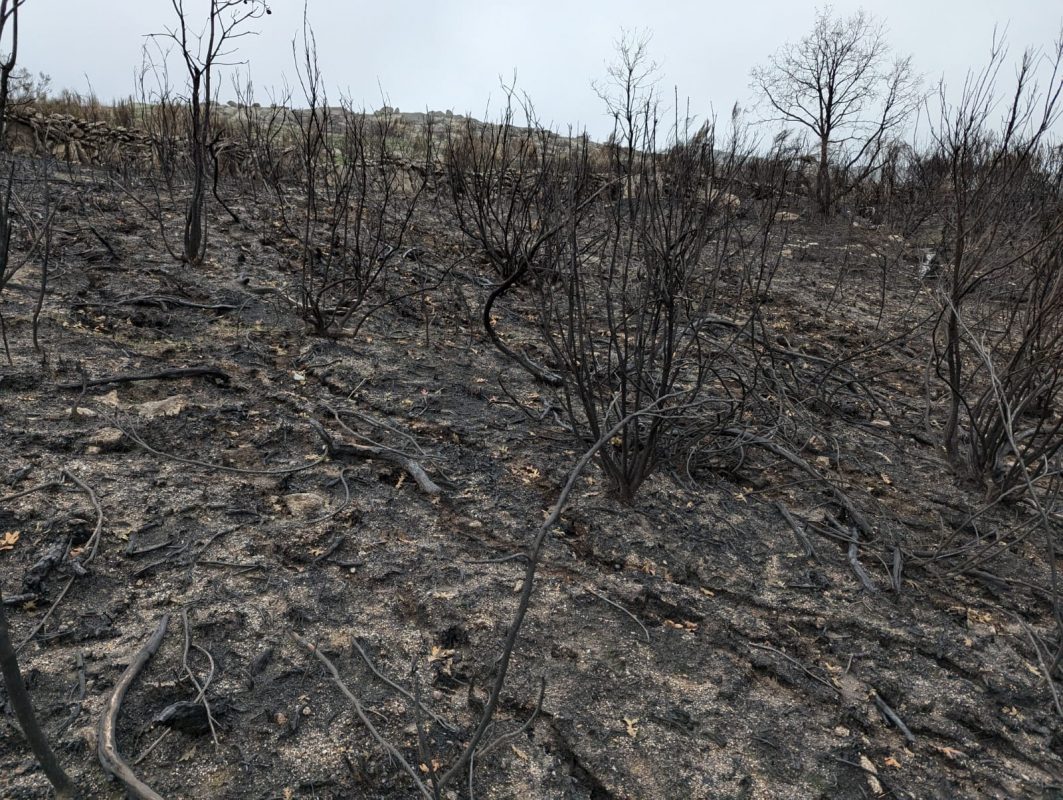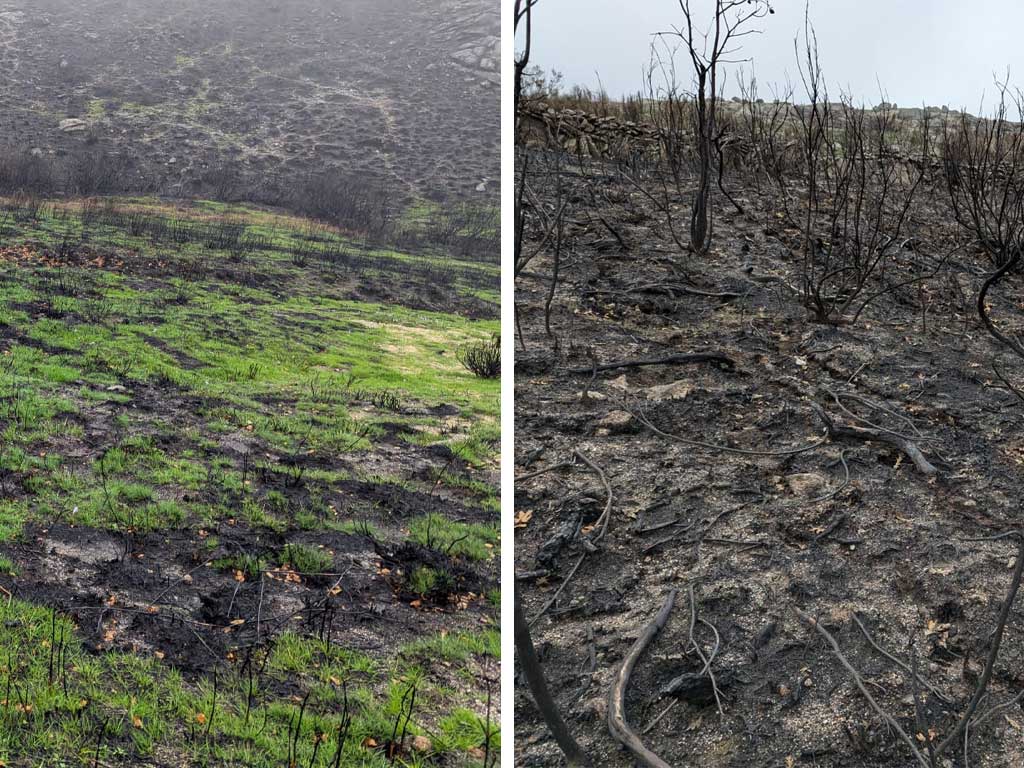The two photos attached describe the essence of the LIFE-Maronesa project.


They were taken on October 24th in the Alvadia common land (Ribeira de Pena municipality). Both areas were affected by the fires of a month ago. In one the grass grew, in the other it didn’t.
Why?
In the green area, the heather was sparse and low, the grass abundant and, implicitly, the seeds and rhizomes of the grasses. In the gray area, the heather was dense, continuous and tall (> 1.5 m), with a large mass of fine fuel close to the ground. In the green, the summer fire spared the seeds, didn’t enter the soil, fertilized the earth and the perennial grass sprouted quickly with the first rains, at the expense of the reserves accumulated in the rhizomes and gorse during the spring. The green leaves convert sunlight into biomass, protect the land, load the soil with carbon and feed the cows. The cows, in turn, cycle the nutrients and speed up the recovery of the vegetation cover.
In the gray area, the few seeds and other pre-existing diaspores of herbaceous plants have been burned by the fire, the soil is unprotected, many nutrients have been washed away by rainwater (phosphorus, for example), and a significant part of the soil’s organic matter has leaked into the atmosphere in the form of carbon dioxide, a powerful greenhouse gas. Recolonization by the greenery will be slow. Some gorse – not all, because mortality is high – will sprout in the spring. However, for years the vegetation will be dominated by mosses and annual plants, which are short-lived, not very productive, of no interest for forage, with small seeds carried by the wind, such as the unfortunately famous hunger grass (Agrostis truncatula).
Second question: how can we keep the hills green, productive and diverse in landscapes with a high risk of summer fires?
Control thin fuels with grazing and low-intensity fire in short recurrence cycles (prescribed and/or pastoral). The undergrowth must not get too high above the knee. Whether we like it or not, the soil, biological diversity and the production of wealth are protected by more and better fire. There is no other way.


